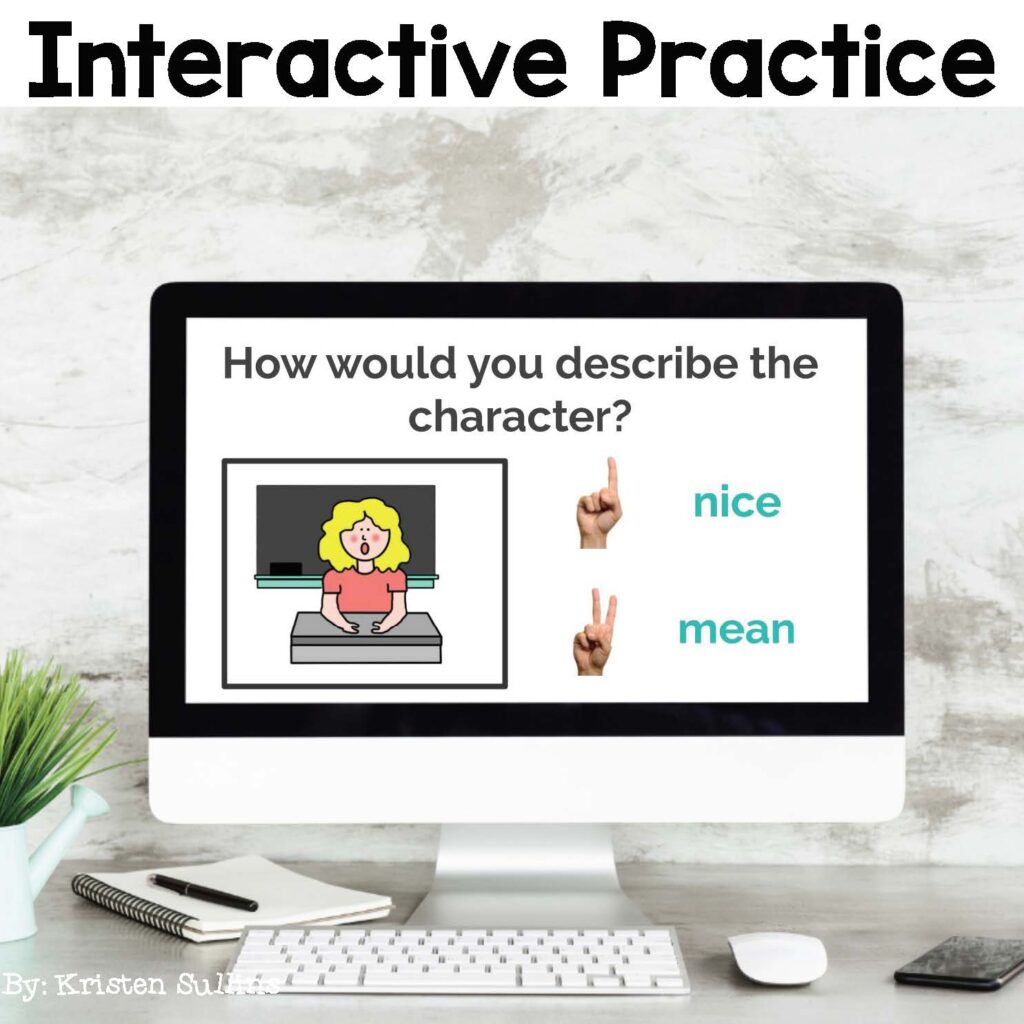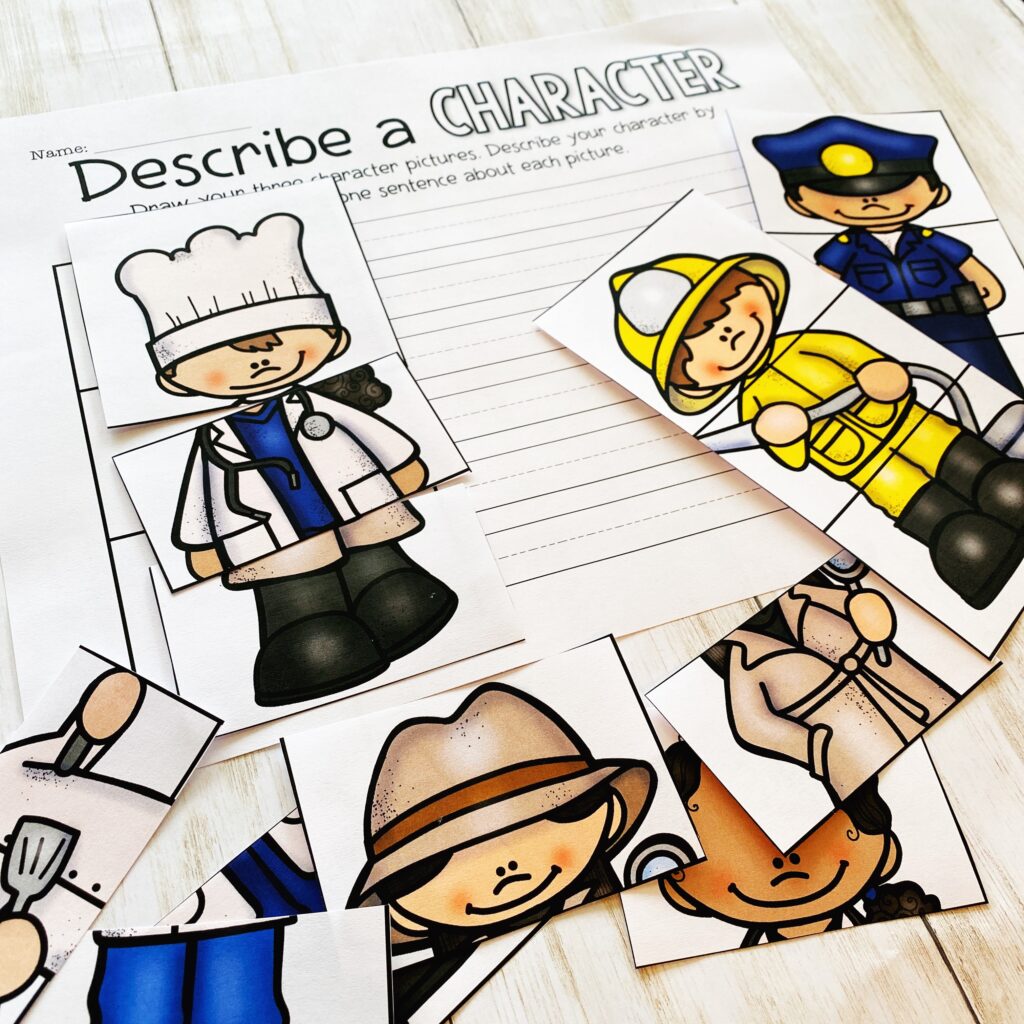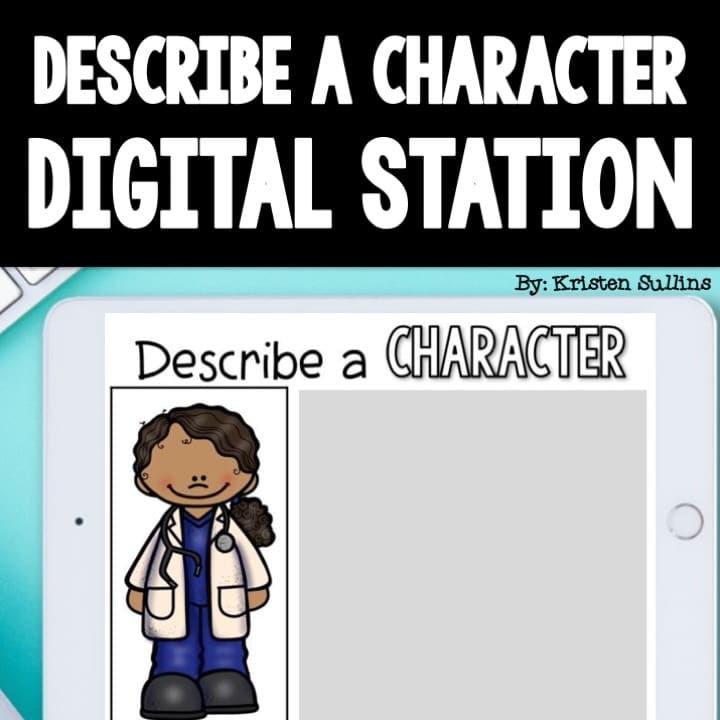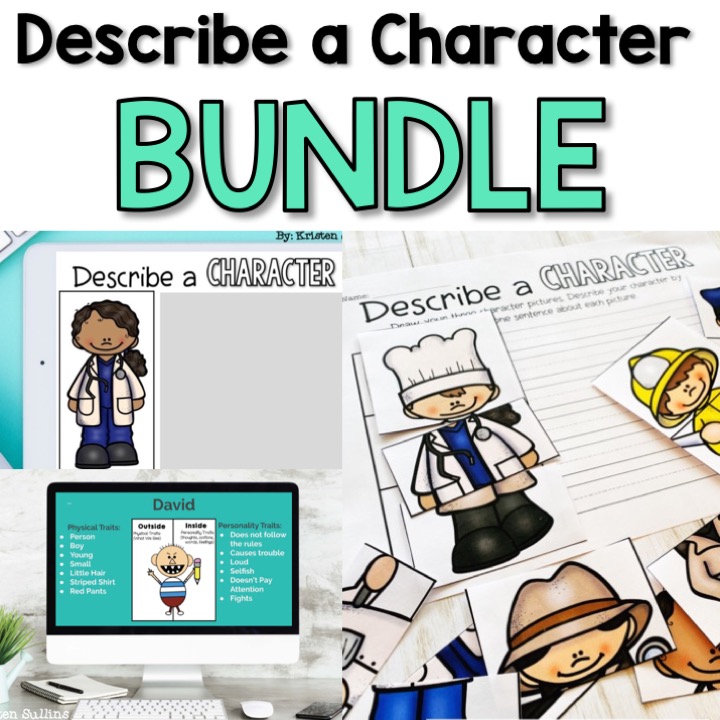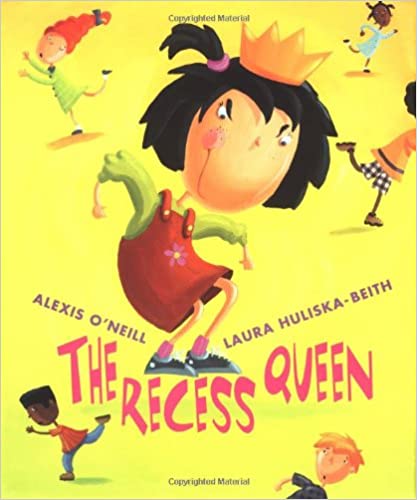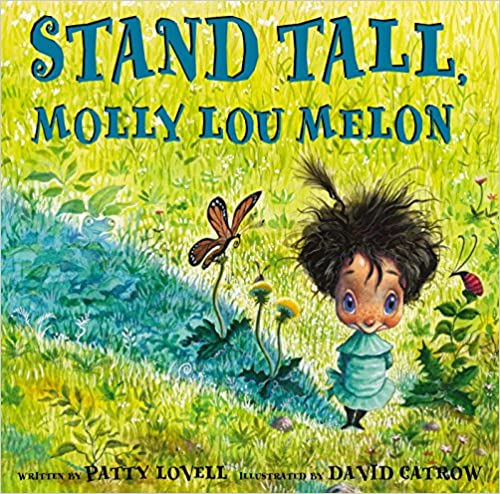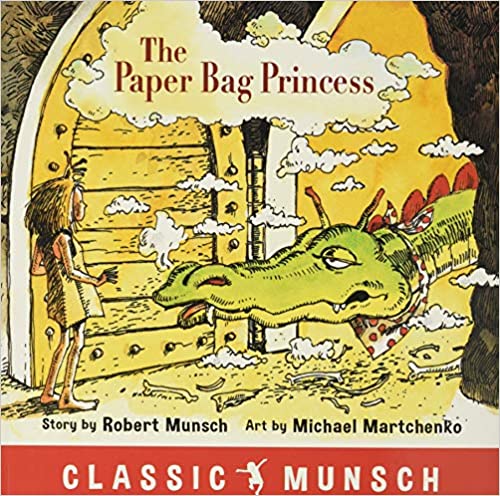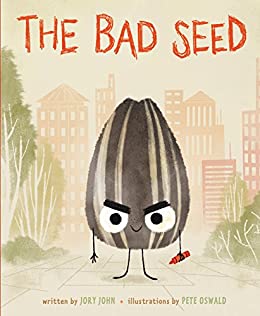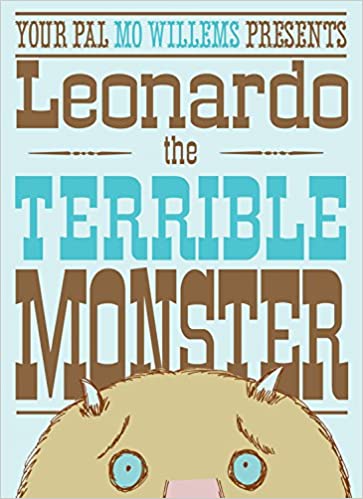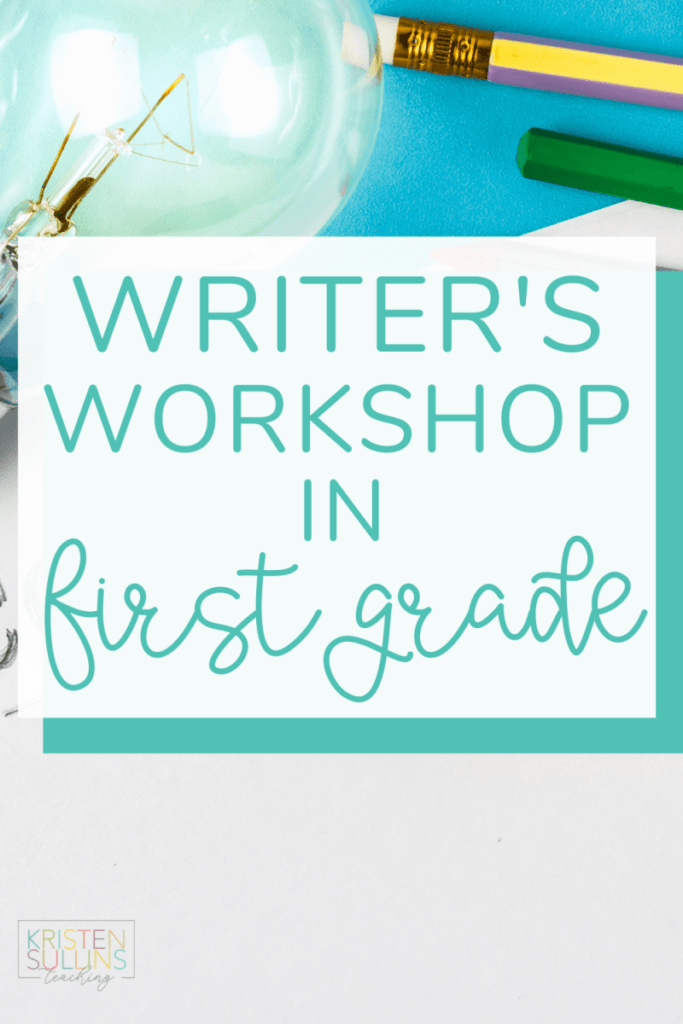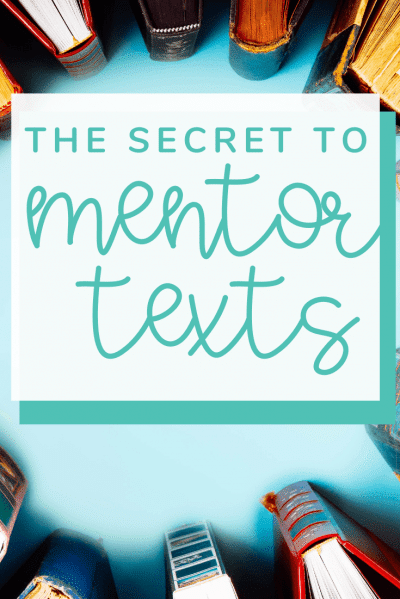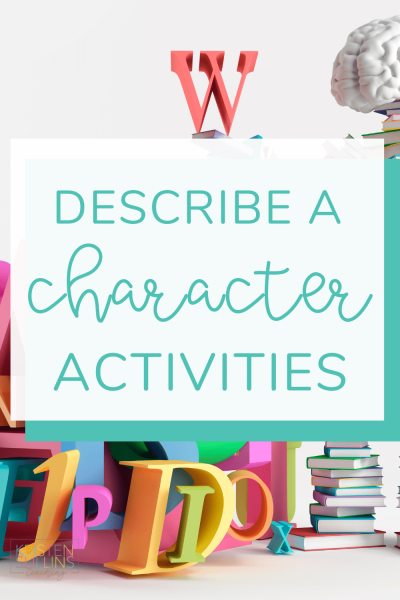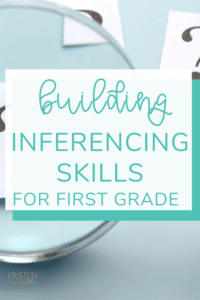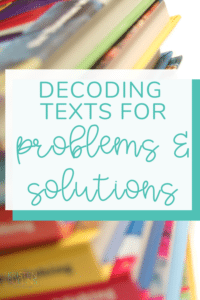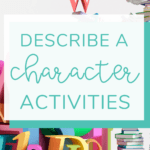Being able to easily describe a character is a foundational reading comprehension skill for first grade students.
It's an activity that can be done with every single read aloud.
It can (and should) be done whole group, in small group, with partners, in literacy stations and during independent reading. It's also a great skill for parents to work on at home.
To describe a character, we typically think of just describing what a character looks like or does. But, it's a lot more than that.
Students must be able to identify internal characteristics or traits (feelings, motivations, thoughts, dialogues and actions) and also their external traits or characteristics (what they look like).
This sounds like an easy skill, but students can often struggle with identifying motivations for why a character says or does something.

What First Grade Students Need to Know About Character
First, let's talk about what a character actually is.
A character is defined as “a person or thing who plays a role in a book, play, or movie”.
A first grade student should be able to not only identify the main character in a story or text, but they should also be able to:
- Describing the character’s:
- physical characteristics
- personality
- behavior and actions
- Identify evidence from the text that explicitly explains the reasons for a character’s action(s)
- Identify evidence from the text that supports inferences about the reasons for a character’s action(s)
The biggest takeaway about what you should teach first grade students about describing a character is that they should:
- Be able to describe the character as a whole (internal and external character traits)
- Back up their description of the character using text evidence
How to Introduce Describe a Character for First Grade
If you teach lower elementary, then you know that there is SO much that goes into the comprehension of a book.
First grade students are learning so much at this age and even listening comprehension requires their little brains to work so hard.
Why do I bring this up?
Because I want you to think about how hard they are ALREADY working when they are listening to a read aloud and when you use a mentor text to introduce a NEW SKILL, most students’ brains go into overload!
So what should we do instead?
Start with a non-text activity. Let me introduce you to a new kind of “slideshow”.
I like to use interactive slideshows/powerpoints. My slideshows always follow this order:
- Teaching Slides: Introduces students to WHAT the skill is
- Guided Practice: Introduces students to HOW to apply the skill
- Interactive Practice: Gives students an example and allows them to PRACTICE the skill in an easy and concise way
Describe a Character Activities for First Grade
After we practice the slideshow, then we practice building our describing a character muscles with some guided and independent practice.
I've found the best and easiest way to do this is with images of characters with common jobs. This gives students a starting point because they typically know at least one or two things about each of the jobs shown by the characters.
My students do this Describe a Character activity (seen on the right). We do one together as a class for guided practice.
For this activity, students must can either choose one whole matching character, or they can mix and match three different pictures to form one new and unique character.
Students then have to use the external characteristics of the character to describe them.
Then, with guidance, we talk about internal motivations for the character. For example, a firefighter has to be brave, and a detective has to be inquisitive.
After we practice this activity together, it goes into their stations for Guided Reading.
The best part about this activity is that you can leave it out for several weeks because each time students can choose a new set of pictures!
Digital Describe a Character Activities for First Grade
Whether you are teaching virtually (thanks alot COVID) or in the classroom, our students are primed now more than ever to complete activities digitally.
The Describe a Character station activity I just showed you is available digitally also!
You can read more about how to integrate Digital Comprehension Tools here.
Mentor Texts for Describing a Character
A mentor text is an incredibly powerful tool for teaching reading comprehension skills such as describing a character!
(make sure you keep reading to the end of this post to see a list of my favorite mentor texts for describing a character)
The problem that many teachers run into with mentor texts is that there are SO MANY different skills you can teach with the same mentor text….
Sometimes we try to do TOO MUCH and we overwhelm our students!
Let me introduce you to a Comprehension Focus Question (CFQ).
A CFQ is one question that you focus on through the entire text!
It simplifies things for you and your students. (more on that later)…
But let's take a minute to dispel so myths about mentor texts..
A mentor text is NOT a book that you read once and put it away.
A mentor text is a book that you read once, then refer back to again and again and again.
The greatest benefit of a good mentor text is that after you have read it once, when you refer back to it, you aren’t reading the entire book again, you are simply referring back to one or two pages.
It will save you SO much time.
AND students are already familiar with the story line meaning that already have a foundation for whatever comprehension skill you are about to dive into!
How to Boost Comprehension for Problem & Solution
Comprehension Focus Questions
As I mentioned, a Comprehension Focus Question (CFQ) is a very focused and intentional comprehension goal for an activity, a week or even a unit.
If you have done your research and you understand your learning standard, the vocabulary and what students need to know…
Then it becomes very easy to choose a goal (or a comprehension focus question).
But, why do you need a comprehension goal?
To stay FOCUSED!
Not just for you, but for your students also!
Let’s look at an example. Let’s say that this week you are focusing on how to make an inference. Well, there are about a hundred different ways you can make an inference and a CFQ allows you to focus on one area at a time.
Example CFQ: “How Did The Character Change From ___ To ____?”
In this comprehension focus question, you and your students are focusing in on the characters of the story.
The great thing about CFQ’s is that the next time you pull out this mentor text, you can choose a different CFQ to focus on while still practicing how to make an inference!


Sentence Stems
Another great strategy that falls right in long with mentor texts and comprehension focus questions is sentence stems.
A sentence stem is a phrase that your first grade students will use to answer a comprehension question.
Sentence stems are designed to get students to answer comprehension questions more fully rather than giving one word answers.
Sentence stems encourage students to explain their thinking.
I like to have a list of sentence stems next to my table that are specific to each comprehension skill. I stick to one or two stems per skill for the entire year because I want my students to be consistent. (This also makes it a lot easier for them)
If we are sticking with our Make an Inference example, I would use the following sentence stems:
I Think ___ Because____.
I Read This ____ So I Think _____
Describe a Character Activities for First Grade
All of the activities that you found in this post, both printable and digital, can be found in my Describe a Character Bundle here.
You can save up to 20% by purchasing the items together, but you can also purchase individual items to better fit your needs!
Best Books for Describe a Character
**You can use the recording sheet from the Describe a Character station with all of these read alouds!



